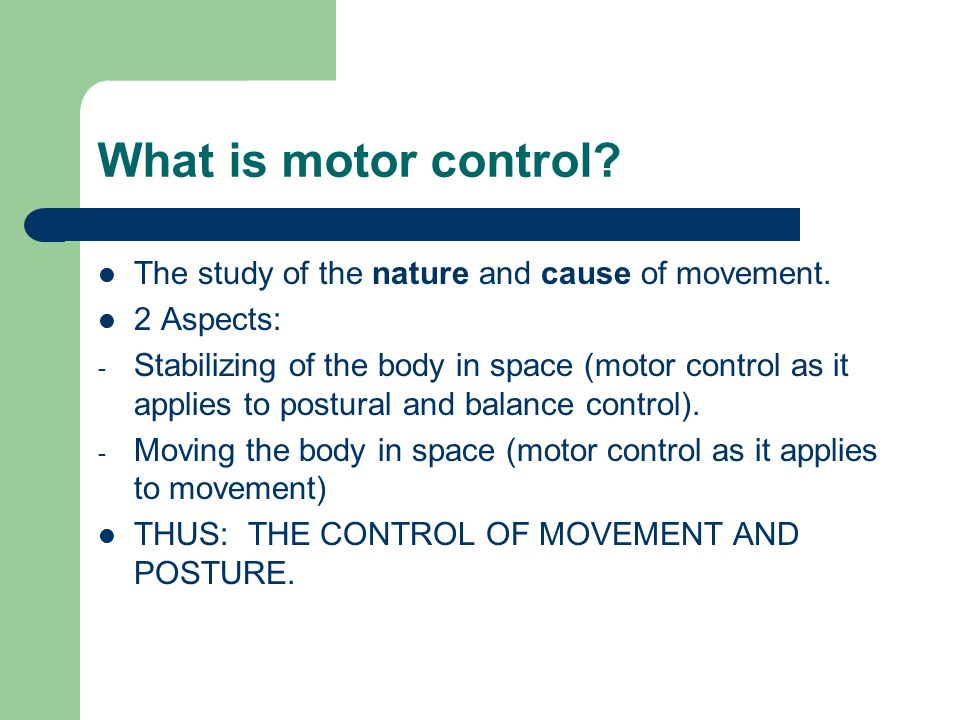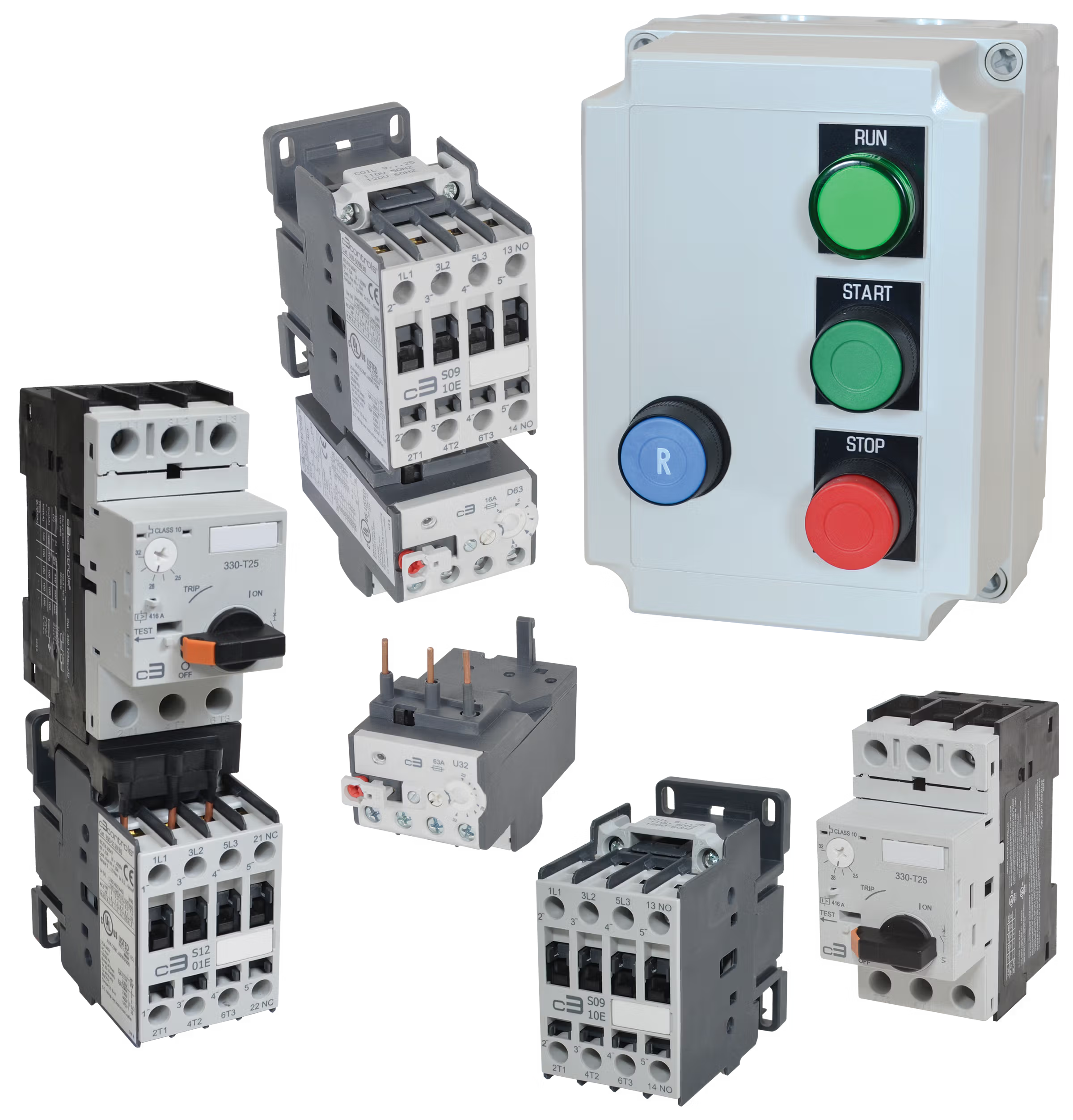

Guide to Motor Control
Catalog
Definition of Motor Control Types of Motor ControlKey Features of Motor Control:Trends of the Motor Control IndustryFrequently Asked QuestionsRelated ArticlesDefinition of Motor Control
Motor Control pertains to the field of managing the functioning of electric motors. It encompasses the utilization of an array of electronic circuits and control algorithms to regulate the motor's performance in terms of desired velocity, rotational force, and direction. For instance, within the context of industrial automation assembly lines, Motor Control techniques are employed to modulate the velocity of conveyor belt motors, ensuring that goods progress along the production line at an optimal pace.


Definition of Motor Control
Types of Motor Control
1. Non-Feedback Control
Non-Feedback Control is a straightforward approach in Motor Control. Here, the controller operates the motor based on predetermined commands without monitoring the motor's actual operational status. For instance, to steer a stepper motor to a specific angular position, you transmit a set number of pulse signals to the motor driver, and the motor responds by turning to the corresponding angle as per its predefined step angle. This method operates on a one-way command scheme without any feedback to amend the output.
2. Feedback Control
Feedback Control modifies the control signal based on the actual output feedback from the motor. It primarily involves speed feedback control, position feedback control, and torque feedback control. In the case of speed feedback control, a speed sensor (like an encoder) measures the motor's actual speed, which is then compared to the desired speed. The controller then fine-tunes the motor's input voltage or current according to the discrepancy to align the motor speed with the target. For example, in industrial automation, to maintain a steady speed on a conveyor belt, a speed sensor continuously monitors the motor's velocity. If the speed drops below the set point, the motor's input voltage is boosted; if it exceeds the set point, the voltage is reduced.
3. Fuzzy Logic Control
Fuzzy Logic Control relies on fuzzy logic principles. It doesn't need an exact mathematical model but instead employs linguistic variables and fuzzy rules for control purposes. In Motor Control, the motor's operational conditions (like speed or torque) are described in vague terms such as "fast," "slow," "high," or "low." Fuzzy rules are then created based on expertise, such as "If the motor speed is slightly low and the load is heavy, then marginally increase the input voltage." The controller applies fuzzy reasoning to the input variables and rules, resulting in a precise control action to regulate the motor. For example, in complex industrial processes where motor load changes are not easily captured by a precise model, fuzzy control can effectively manage the motor based on the practical experience of operators.
4. Self-Adaptive Control
Self-Adaptive Control is a system that autonomously adjusts its parameters in response to the dynamic changes in the motor's characteristics. It can track real-time changes in the motor's parameters (like variations in resistance or inductance) and operational conditions, then tweak the controller parameters as per an adaptive algorithm. For instance, if a motor experiences a sudden load increase, the self-adaptive control system automatically adjusts the controller's gain to maintain the motor's stable operation, such as consistent speed or torque output, under the altered load conditions.


Motor Control
Key Features of Motor Control:
1. Accuracy:
Motor Control systems are capable of finely tuning the motor's velocity, positioning, and rotational force with high precision, which is crucial for applications in high-precision machinery and automated processes.
2. Responsiveness:
The system is designed to swiftly react to changes in commands and loads, maintaining the stability and performance of the motor.
3. Adaptability:
Motor Control systems have the versatility to accommodate a variety of motor types and specific application demands, demonstrating their adaptability and flexibility.
4. Dependability:
A well-engineered Motor Control system ensures the reliable operation of motors across different settings, minimizing the likelihood of breakdowns.
5. Effectiveness:
By accurately managing the motor's operating conditions, the system can enhance the motor's energy efficiency, leading to a reduction in power usage.
6. Smart Control:
Contemporary Motor Control systems frequently incorporate advanced control strategies such as fuzzy logic, adaptive control, and predictive control, elevating the sophistication of automated control mechanisms.


features of Motor Control
Trends of the Motor Control Industry
1. Efficiency, Smart Technology, and Consolidation:
The field of Motor Control is advancing towards greater efficiency, smart technology, and consolidation. This involves the interdisciplinary integration of cutting-edge electronics and smart control systems, fostering a holistic approach to the design and production of motor system control, sensing, and actuation capabilities.
2. Expanding Global Market:
Industry analyst Omdia reports that global MCU sales hit $21.9 billion in 2021 and are projected to grow to $26.6 billion by 2026, marking a compound annual growth rate of 4%.
3. Rapid Market Expansion in China:
The Chinese market is outpacing global growth, anticipating a market valuation of approximately $8.2 billion by 2025. This is primarily attributed to the swift expansion of new energy vehicles, the Internet of Things, and applications in industrial control sectors.
4. Growing Utilization of BLDC Motors:
Benefiting from their superior efficiency and reduced noise, BLDC motors are gaining traction in the realms of smart home appliances, power tools, and household goods. Consequently, the market demand for motor drive chips is anticipated to maintain a steady upward trend over an extended period.
5. Progress in the Electric Vehicle Industry:
The electric vehicle industry has witnessed considerable advancements in motor drive and control technology. This includes the utilization of high-efficiency power semiconductors, sophisticated control algorithms, integrated motor and driver designs, and advancements in intelligent sensing technologies.
6. Energy Conservation and Efficiency:
It is imperative for Motor Control technology to prioritize energy efficiency, particularly in the electric vehicle industry, where efficient Motor Control can markedly enhance vehicle range and overall energy efficiency.


trends of the Motor Control industry
Frequently Asked Questions
1. What is Cerebral Motor Control?
Cerebral Motor Control refers to the sophisticated system in humans and many other species that manages the timing of neural inputs and outputs, coordinates motor programs, performs feedback checks and adjustments on motor outputs, and interfaces with a broad spectrum of sensory and higher-level premotor activities within the brain.
2. What constitutes a Motor Control exercise?
A Motor Control exercise is an exercise regimen designed to rehabilitate the coordinated and efficient functioning of muscles that govern and sustain the spine. Under the guidance of a therapist, patients learn to re-engage their muscles in normal patterns during straightforward activities.
3. What does Motor Control entail in physiotherapy?
Motor Control, in the context of physiotherapy, is the capacity to modulate the mechanisms underlying movement. Numerous theories exist to elucidate the mechanisms of Motor Control, providing a theoretical framework for therapists to assess and treat patients with impaired movement.
4. What are the four tiers of Motor Control?
Movement is governed by a hierarchical system composed of multiple structures. The four primary levels of the motor system, ranked from lowest to highest in the hierarchy, are 1) the spinal cord, 2) the brainstem, 3) the primary motor cortex, and 4) the associative cortex.
5. What are the two fundamental categories of Motor Controls?
Motor Controls can be manual, necessitating operator intervention to sequence a start switch through various steps to ramp up the load, or fully automatic, utilizing internal timers or current sensors to manage motor acceleration. Some Motor Controls also permit the adjustment of electric motor speeds.
6. How is Motor Control evaluated?
Motor Control can be appraised either qualitatively, using grading scales, or quantitatively, employing instruments such as the Fugl-Meyer Assessment, which assesses motor function, sensation, balance, and range of motion. The Trunk Impairment Scale evaluates trunk control and coordination while sitting. Accurate assessment is crucial for informing effective treatment strategies.
Related Articles
L9908 Gate Driver for Automotive Motor Control
Instrumentation Amplifier vs a Current Sense Amplifier
Subscribe to JMBom Electronics !













